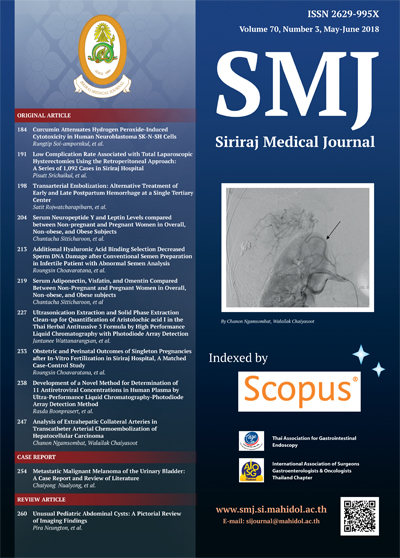Transarterial Embolization: Alternative Treatment of Early and Late Postpartum Hemorrhage at a Single Tertiary Center
Keywords:
Postpartum hemorrhage; embolization; pseudoaneurysmAbstract
Objective: To evaluate the efficacy of uterine artery embolization (UAE) in the treatment of postpartum hemorrhage (PPH).
Methods: All women who underwent UAE for the treatment of PPH between August 2008 and February 2016 were included. The patients were divided into early and late PPH defined by the onset of bleeding. All UAE procedures were performed by experienced interventional radiologists. Electronic medical records and radiological images were reviewed for data collection. Statistically significant associations between angiographic findings and the onset of PPH were evaluated.
Results: Total twenty-one women were enrolled in the study. The mean age of the patients was 30.1 years (range 16-42 years).Total 23 UAE procedures were performed in 21 women. Major clinical presentation was vaginal bleeding in 19 patients (90.5%) and hypovolemic shock was found in 10 patients (47.6%). Eight patients (38.1%) were in early PPH group and thirteen patients (61.9%) were in late PPH group. Five women underwent hysterectomy before UAE. Active contrast extravasation was a common finding associated with early PPH (50%) while pseudoaneurysms were commonly found in late PPH (53.8%) (p=0.016). The overall technical and clinical success rate were 100%. However, two women required repeated UAE after gelatin sponge embolization for active extravasation due to re-bleeding. No immediate complication of UAE was found in our study.
Conclusion: UAE is a safe and effective treatment for both early and late PPH. Various embolic materials can be used but permanent embolic material is preferable in patient with extravasation.
Downloads
Published
How to Cite
Issue
Section
License
Authors who publish with this journal agree to the following conditions:
Copyright Transfer
In submitting a manuscript, the authors acknowledge that the work will become the copyrighted property of Siriraj Medical Journal upon publication.
License
Articles are licensed under a Creative Commons Attribution-NonCommercial-NoDerivatives 4.0 International License (CC BY-NC-ND 4.0). This license allows for the sharing of the work for non-commercial purposes with proper attribution to the authors and the journal. However, it does not permit modifications or the creation of derivative works.
Sharing and Access
Authors are encouraged to share their article on their personal or institutional websites and through other non-commercial platforms. Doing so can increase readership and citations.











